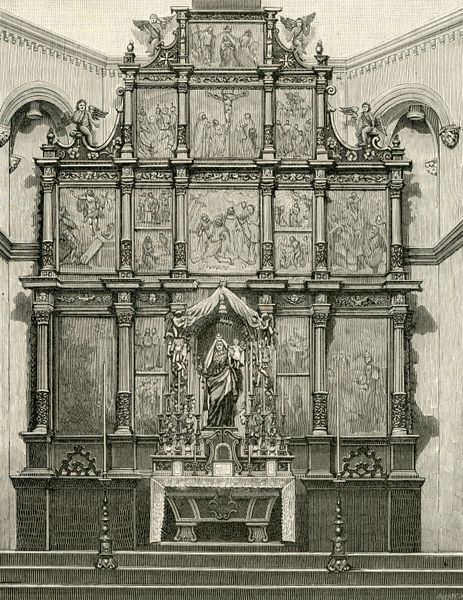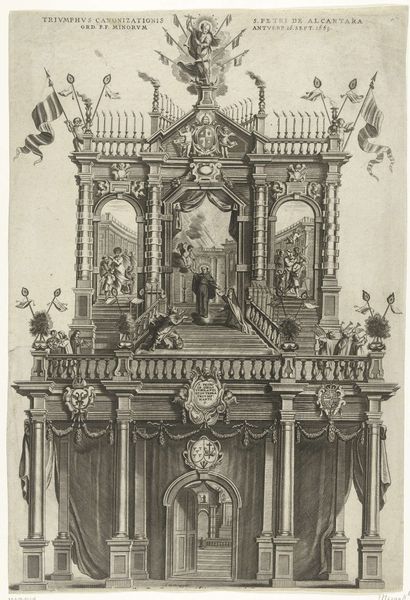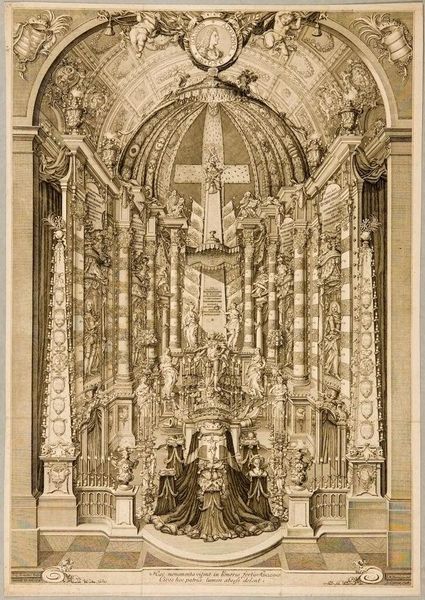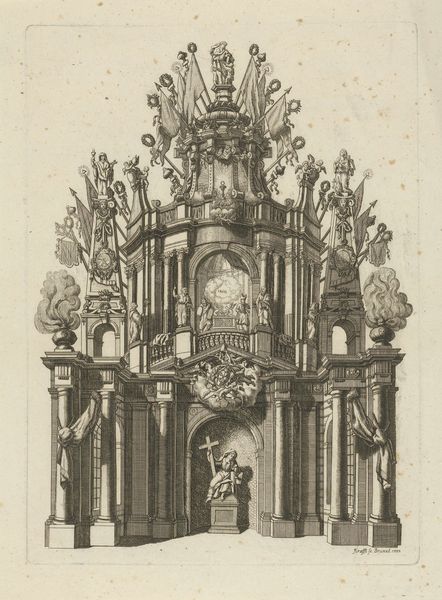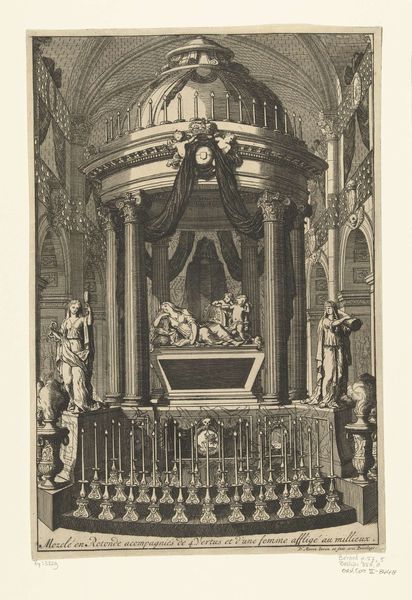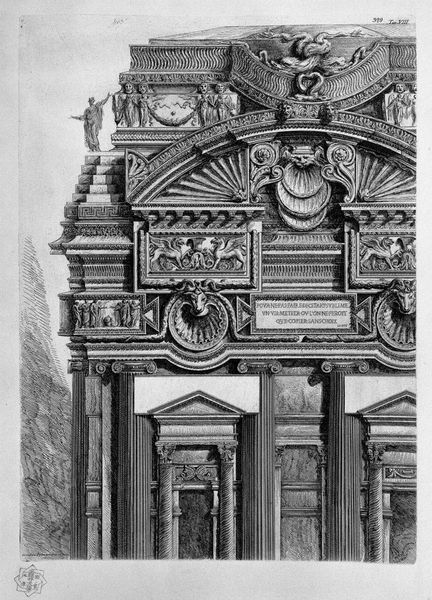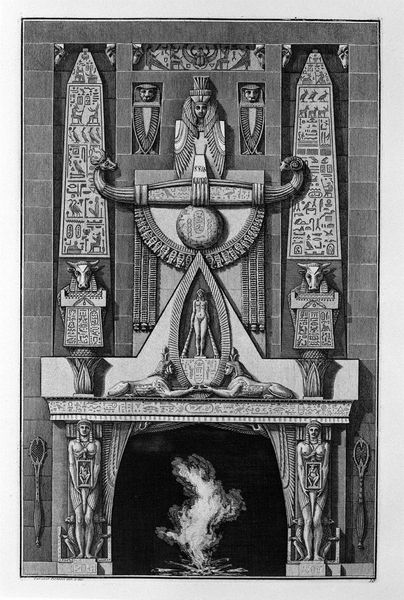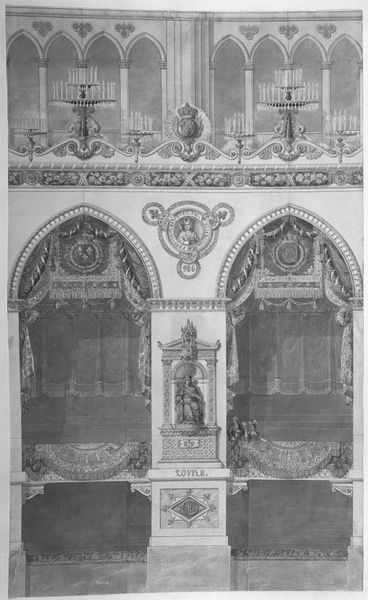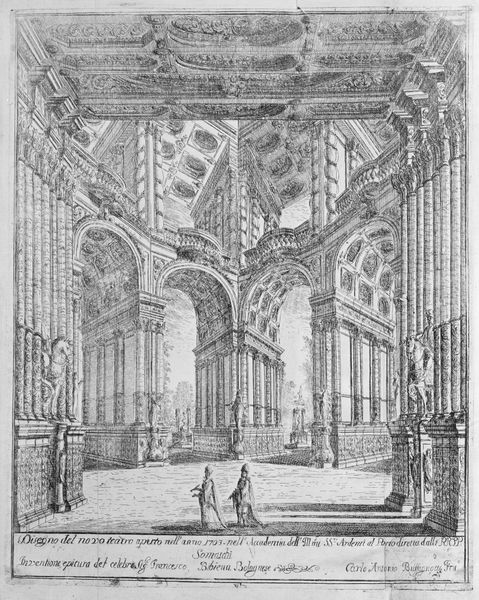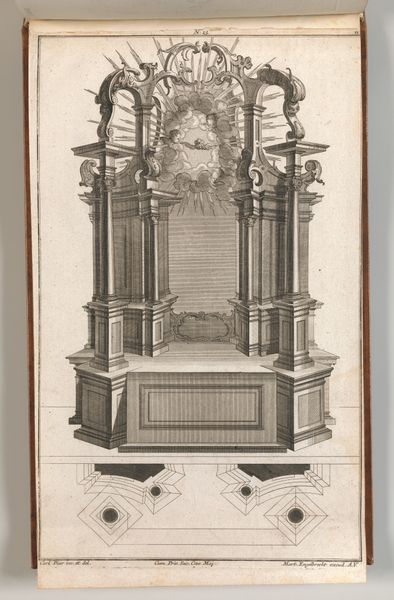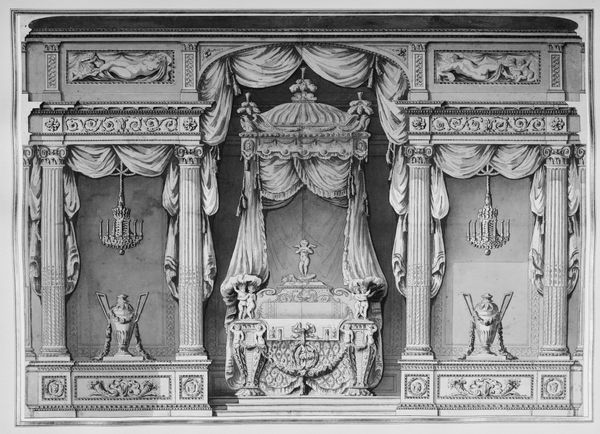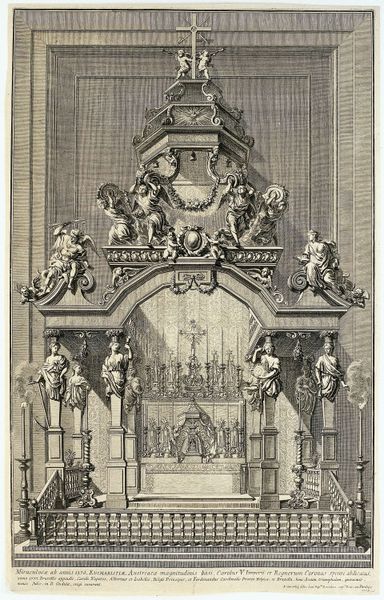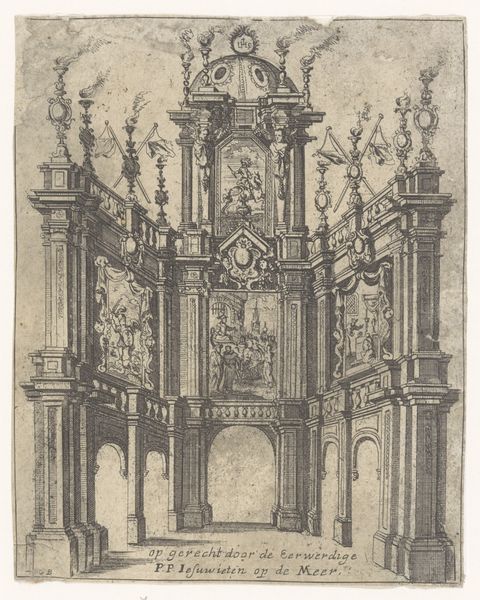
Tomb of Joseph I, Emperor of Hungary, King of Bohemia 1700 - 1769
0:00
0:00
drawing, print, etching, engraving, architecture
#
drawing
#
baroque
# print
#
etching
#
geometric
#
arch
#
history-painting
#
engraving
#
architecture
Dimensions: 21-1/2 x 13-7/8 in. (54.6 x 35.2 cm); mat size: 28 x 22 in.
Copyright: Public Domain
Editor: This is Alexander Galli Bibiena's "Tomb of Joseph I, Emperor of Hungary, King of Bohemia," dating somewhere between 1700 and 1769. It's a print, an etching and engraving – quite a detailed architectural rendering. I'm struck by the almost obsessive detail; it's both impressive and overwhelming. What do you make of it? Curator: Considering this piece, I'm drawn to the material implications of such a grand commemorative project. Think about the labor involved in creating not only the actual tomb – likely stone, marble, perhaps bronze – but then this detailed representation of it in print. How did this process contribute to constructing and reinforcing Joseph I's imperial authority? Editor: So you’re focusing on the ‘how’ it was made, rather than the ‘why’ as a symbol? Curator: Precisely. We need to consider who was involved in quarrying the stone, carving the sculptures, operating the printing presses. The process reveals social hierarchies. What resources were extracted, and at what cost, to create this monument, and then, in turn, to circulate its image? It challenges a purely aesthetic appreciation. Editor: That's a good point, focusing on the human element of production gets overlooked so often when discussing art of this period. The artist obviously had to use quite complex mathematics and methods of design, maybe the art serves a dual function in advertising the technology available to the Royal Court? Curator: Absolutely! Furthermore, consider the *consumption* of such images. Who was meant to view this print? Was it accessible to a broad audience, or was its circulation limited to elites? These distribution networks shaped the reception and meaning of Joseph I's image and the Habsburg brand itself. Thinking materially reframes our understanding of Baroque art. Editor: That’s definitely given me a different perspective to consider when looking at historical artworks. Instead of focusing on solely artistic intent, focusing on all the layers that go into making such a monument adds depth. Curator: Indeed, by tracing the materials and labor involved, we can reveal the complex socio-economic networks that underpinned artistic production and its role in solidifying power.
Comments
No comments
Be the first to comment and join the conversation on the ultimate creative platform.
